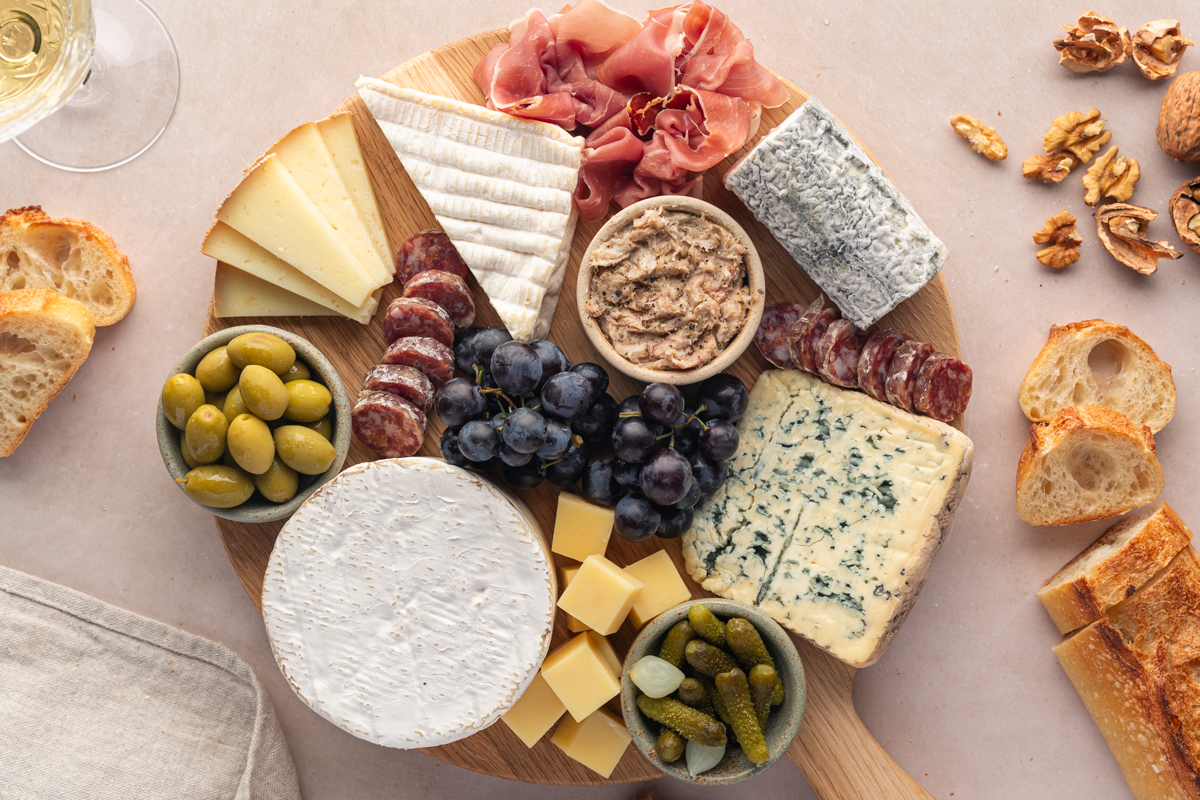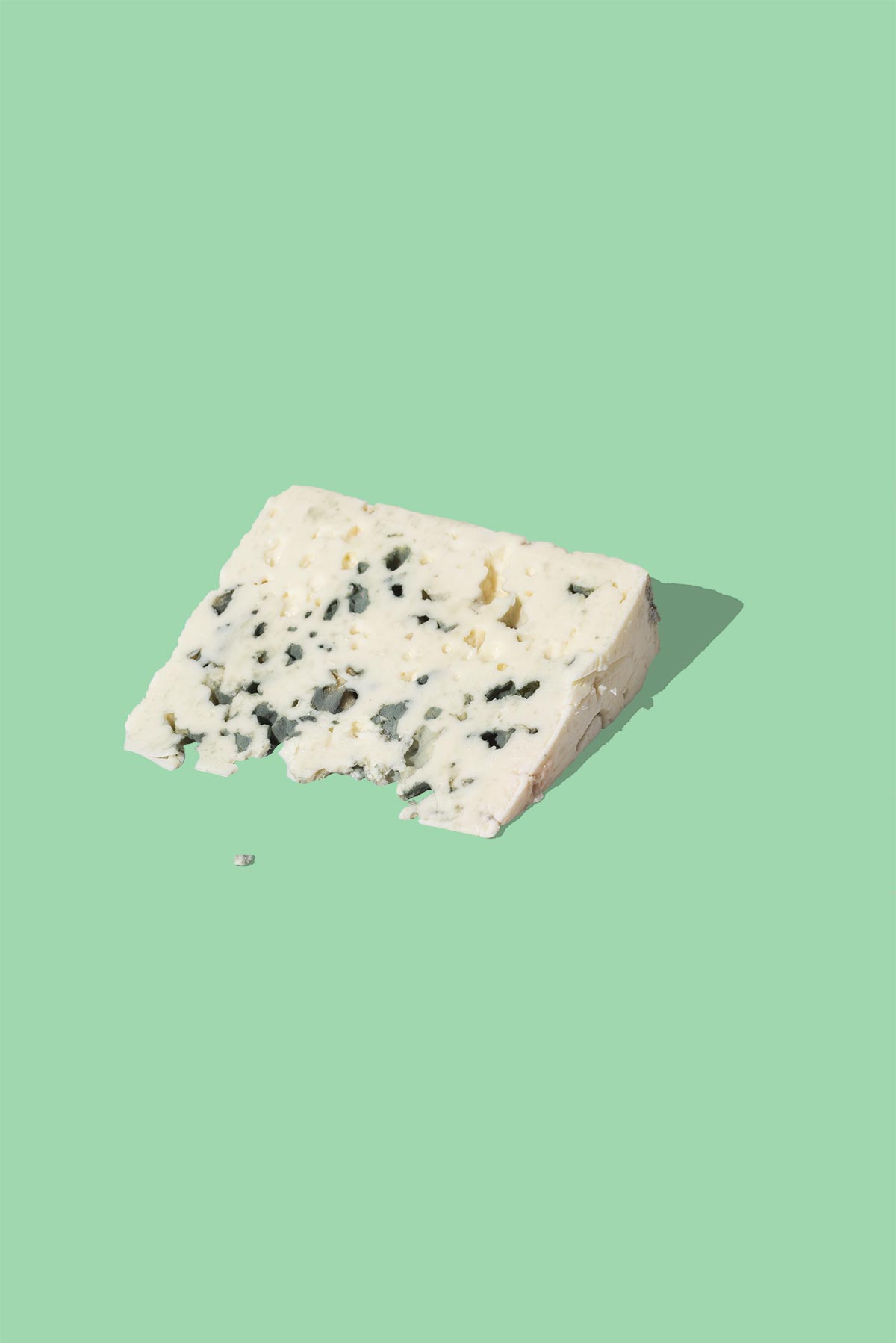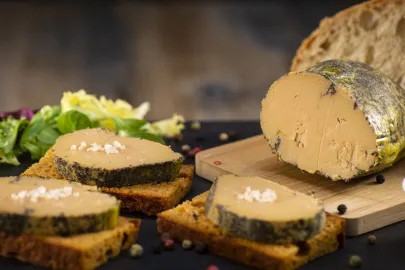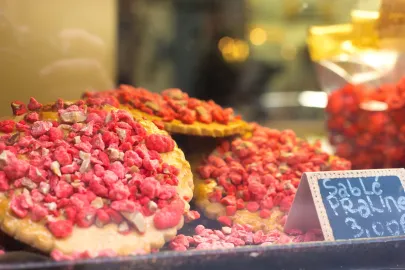This year, Société® Roquefort PDO celebrates its 160th anniversary, though this unique cheese’s rich history dates back far before the mid-19th century. Get to know the history, production methods, and excellency standards of this quintessential French cheese, as well as how to best enjoy it at home, including with two curated recipes shared from the Société®, here.
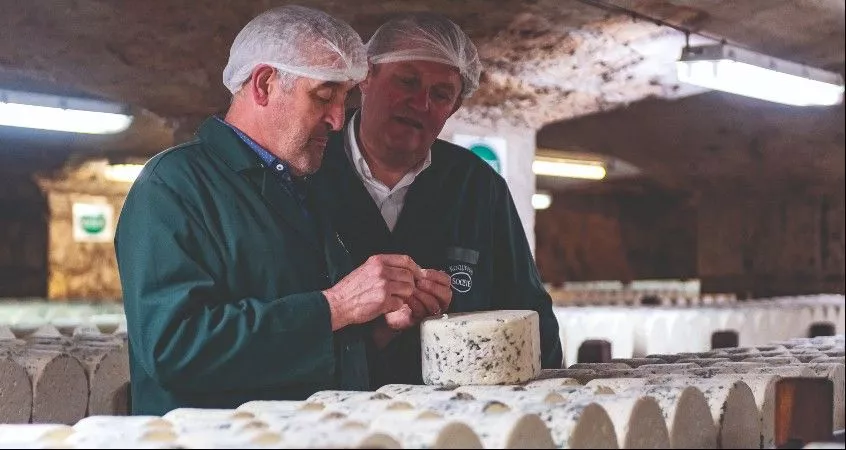
The story begins at the base of the Combalou Mountain, where an unlikely shepherd was taken by a young shepherdess. Blindsided by love, the shepherd left his flock of sheep—along with a loaf of bread and a few milk curds—in his passionate pursuit of the young woman. Unsuccessful in his journey, he returned to his cave to find that his cheese became marbled with colorful veins. Upon first taste, he was amazed to see those special microorganisms, otherwise known as Penicillium roqueforti, had transformed the cheese into what we now know as Roquefort. Thus, the shepherd became the first official producer of Roquefort cheese—or so the legend has it!
© Societe
Although the development of Penicillium roqueforti, the microorganisms responsible for turning ewe’s curds into Roquefort, date back to the Middle Jurassic era, the cheese’s more modern beginnings date back to AD 12, with the writer Columella creating the first recipe using Roquefort. Over the century that followed, the cheese became famous throughout the Latin world, making its way to Rome and beyond. By the 11th century, many Cisterian abbeys were producing Roquefort in their cellars and were selling it for commercial purposes. The cheese remained popular throughout France’s Period of Kings, and by the early 19th century, a demand for Roquefort was being seen like never before.
Société® Roquefort PDO: 160 Years of History
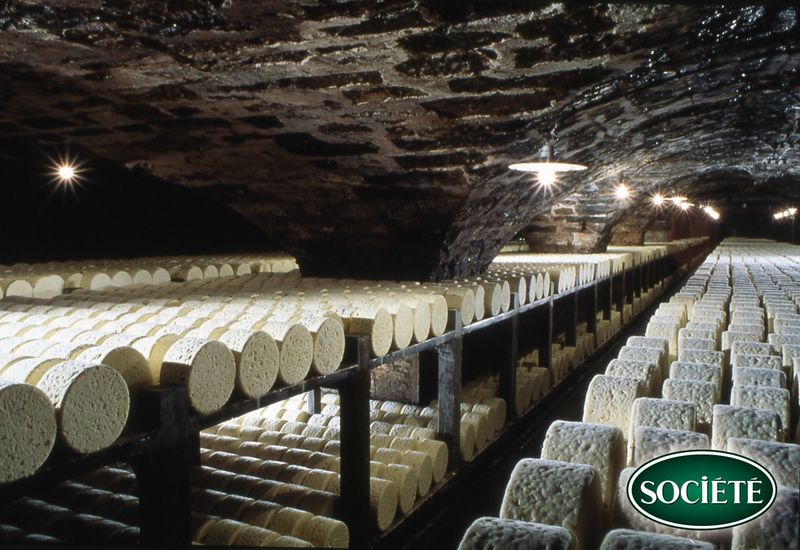
© Societe
The Société Civile des Caves Réunies, a partnership between the 15 main traders and master cheesemakers, was officially created in 1842, with its trademark receiving registered designation in 1863. Over the decades that followed, the cheese’s popularity grew in and around France, and by the late 19th century, the use of refrigeration made it possible to ship the cheese to new export markets, including the United States.
By 1929, the first ewe milking machine was developed at the Société des Caves, which provided both a technical and human revolution for the cheese’s production on a mass scale. According to the Société®, ewe’s milk is the “richest and most fragrant of milks used in cheesemaking,” with the average price clocking in at over three times that of cow’s milk. Today, the main ingredient of Société® Roquefort cheese remains raw milk from Lacaunes’ sheep, of which only 48 gallons of milk per ewe is produced per season.
Meticulous Production Techniques
To create the esteemed Roquefort cheese, ewes are milked for eight months, with milk collected daily from 1,000 producers within the PDO radius and processed at two dairies, Requista adn Ste. Affrique, within the region. According to the Société®, approximately 12 to 13 liters of ewe’s milk is required to produce a Roquefort of approximately three kilograms. The milk is poured into tanks and inoculated with the famed Penicillium roqueforti, which turns the milk to curds. The curds are then cut, prepared, and put into molds, where they then become “loaves,” which are then drained and salted prior to maturation. To ensure that the loaves can breathe, each loaf is marked with 37 needlepoints. After resting for a minimum of 14 days in the dairies’ natural limestone cellars, the Roquefort is then wrapped and aged for a minimum of 90 days in Roquefort-sur-Soulzon prior to release. This centuries old tradition is what led the famous French philosopher Diderot to deem the dairy the King of Cheese—and what makes the cheeses so special today!
Assurance of Quality
Roquefort was the first cheese to be given an AO (later becoming AOC) designation back in 1925; 70 years later, the cheese then received the esteemed European P.D.O. designation in 1996. These recognitions not only elevate the cheese’s standards, but also certify its region of origin, as well as the generations-old methods used to ensure its high quality today.
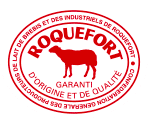
© Societe
One key particularity of the Société® Roquefort PDO is the natural Fleurines (“breaks” in the local mountains) that allow a regular stream of fresh, humid air to cool down cellars all year long. In addition to the locally-sourced raw materials produced by regional sheep—which may only be collected from ewes living no more than 120 kilometers from the village of Roquefort, which must also be fed a minimum of 80% local grass from the region from which they come—this natural phenomenon is one of the main reasons why the uniqueness of Roquefort cheese cannot be copied anywhere else in the world!
Under the strict guidelines of the PDO, the cheesemaking process must respect the natural processes, as well as use local and meticulously-sourced raw materials, thus elevating the status of these prestigious cheeses. Roquefort is known for its ivory hue marked by emerald-green veins, as well as its rich, creamy texture on the palate. Rich in flavor, the cheese has been deemed the King of Cheeses by aficionados worldwide—and the proof is in every bite!
Mastery of Aging
In addition to the meticulous production process of Société® Roquefort cheese, the product’s fastidious aging process is a key component to the cheese’s final quality—and also highlights the noteworthy human value brought to the process in its entirety. A number of key factors go into the Maitre d’Affinage process, from the uniqueness of the local caves to the essential savoir-faire of the oversight passed down from generations.
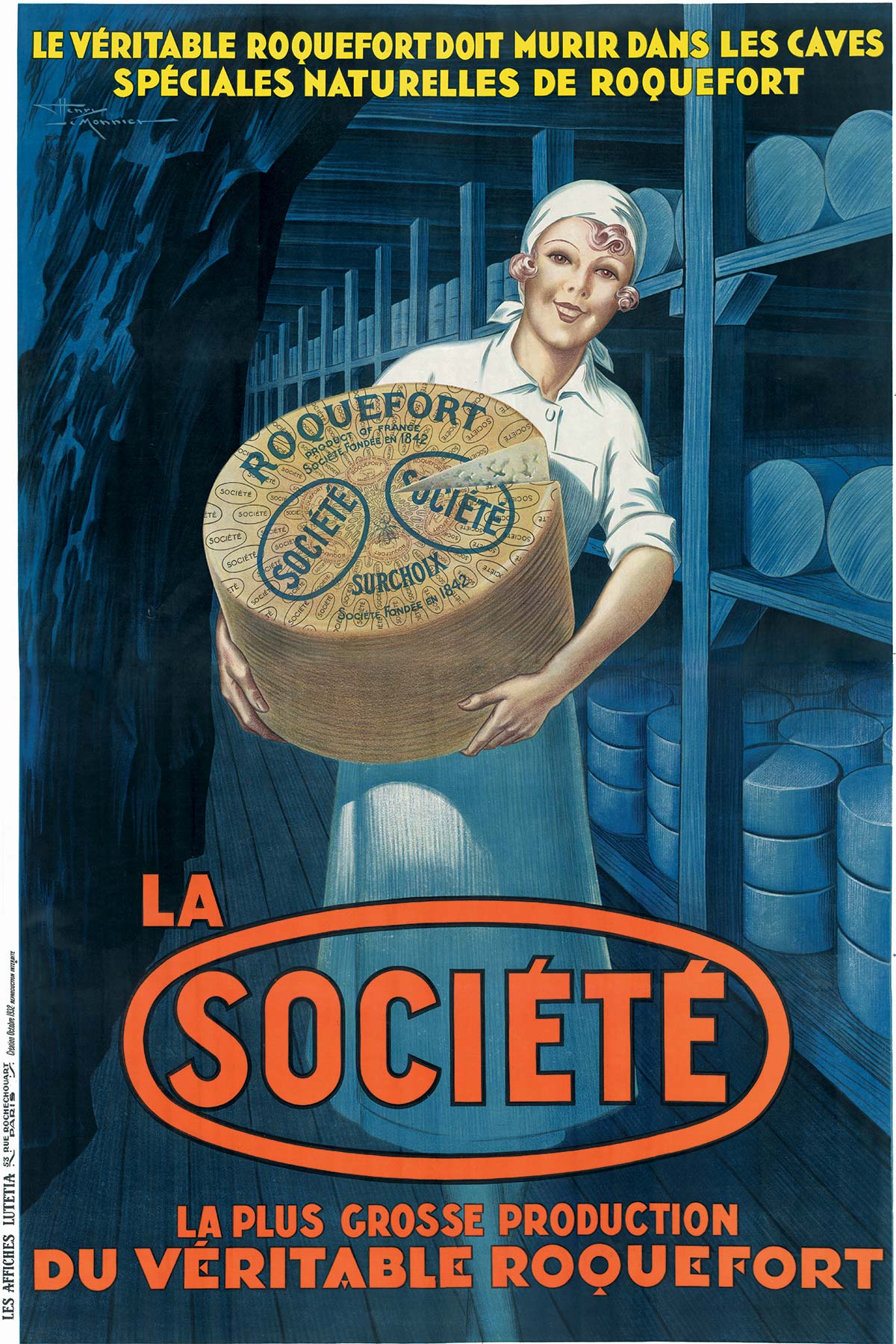
© Societe
The region’s unique caves—which are the largest in Roquefort and boast an impressive heritage dating back to the 16th century—highlight the individuality of the distinct sites from which they come, and thus allow for an incredible range of variety amongst Societe® Roquefort as a whole. Each specific cave allows for singular nuances to develop within the cheese at hand; for example, Templiers versus Baragnaudes will lead to identifiable characteristics within the final product at hand, with the unique strain of penicillium roqueforti equally playing into the final flavor profile. (Note: All three strains of penicillium roqueforti are produced in-house.)
Additionally, the cheeses age on specially-crafted wooden shelves built from natural wood, which brings an added layer of nuance and local sense of terroir to the final product at hand. All of these components work together to ensure that Societe® Roquefort stands apart from its competitors, and thus, render the Societe® Roquefort to stand as the first real cheese brand to truly emerge from France. It’s no surprise that Societe® Roquefort has therefore been a long-standing favorite amongst consumers and industry professionals alike, thanks to its unique history and heritage, as well as the cheese’s undeniable balance, delicate flavor, and distinct flavor profile.
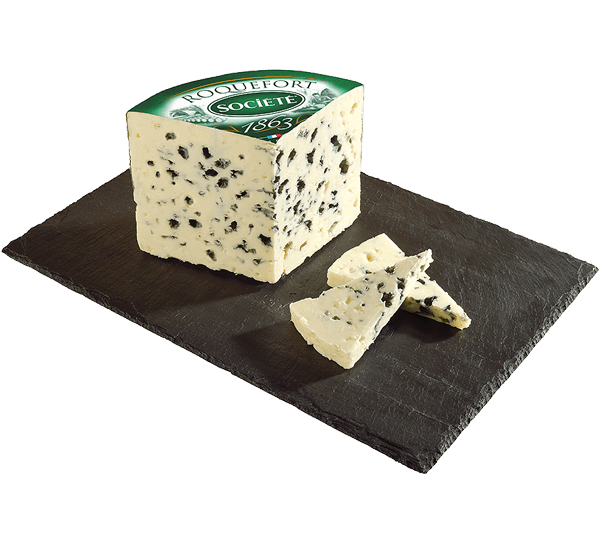
© Societe
How to Enjoy Société® Roquefort PDO (Including Two Versatile Recipes to Make at Home!)
Contributor

Editor



